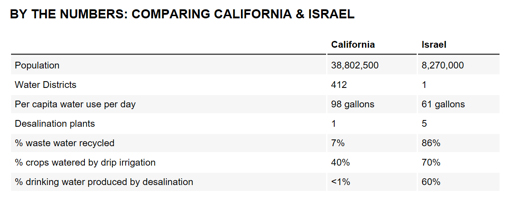Solar observers predict a “Little Ice Age (LIA)” to arrive before 2100. While expert economists confirm that a modestly warmer climate benefits both health and human prosperity, a colder climate generally spells more sickness and poses real danger to agricultural yields—with consequent famines and mass starvation. These calamities can be overcome – through adequate and timely preparation of energy supplies, water projects, and croplands.
There is some urgency in preparing now for the possibility of such a cold period, similar to the LIA that prevailed off and on during 1400-1800 AD. It is likely then that tropical regions will end up as the major sources of food and be called upon to supply the rest of the world.
Short-term energy (till 2100):
No foreseeable problem; known reserves of fossil fuels appear to be adequate – even with a world population peaking at around 9 billion
Long-term energy (till 3000 AD and beyond):
No real problem, if nuclear technology is encouraged to commercialize the use of inert Uranium-238 and Thorium through “breeder reactors”—especially Molten-Salt-cooled fast-neutron Reactors (MSR) and perhaps hybrid fusion-fission. Pure fusion reactors, if perfected, could provide a useful back-up technology
This leaves the problem of adequate water supplies and crop land:
Assuming conventional agricultural practice, the problem consists of three parts:
**Using low-cost water resources for irrigation (Short-term)
**Developing crops that can grow with salt-water irrigation (Short- and long-term)
**Expanding agricultural land to areas now arid or desert, especially in tropical regions (Long-term)
Basic facts:
Domestic water is no longer a problem – thanks to modern desalination technology. Noted oceanographer Roger Revelle (former director of Scripps Institution, La Jolla, CA) estimated the planet’s carrying capacity as 40-50 billion people [Arid Zone Development, Ballinger 1977]—provided that cleaned-up wastewater is used for irrigation and that people are housed in arid regions of the world.
Solutions to California’s Water Crisis from Israel?
Per NBC:
California faces decades more of record drought and needs more than 11 trillion gallons of water just to catch up with its current deficit. That means it could rain an inch of water every day on San Francisco and Oakland for 13 years and we still wouldn’t have that much water. The state faces a water crisis—even if California gets hit with a strong El Niño this year, washing the drought out of public consciousness.
A three-month investigation by NBC Bay Area’s Investigative Unit involved speaking to more than 75 experts in climatology, water policy and new water technology. NBC ’s Investigative Unit discovered that while the drought has stretched the state’s water resources to the limit, the drought itself is not the crisis. The crisis, according to dozens of experts NBC spoke with, is that California has not secured enough new viable water sources not tied to the weather. The experts also say that California’s historic approach to water management is antiquated and does not allow the state to address serious water-shortages in a timely and innovative way. The result: agricultural fields that once produced crops lie fallow, rural towns are running out of water, and farmers are digging wells deeper and deeper as underground aquifers are sucked dry.
In search of solutions, the NBC Investigative Unit traveled to Israel, where about a decade ago the country faced a similar crisis. Now, after treating water as a national-security issue on par with terrorism, Israel produces more water than its population can use.
“This has been a bad run for [California] in terms of the drought and it’s not just the drought itself,” said Dr. Glenn Yago, Senior Director at the Milken Institute, an independent think tank that is currently teaming with scientists from the University of California at Berkeley to find market-based solutions to this drought. “It’s the fact that you have to have a sustainable water system whether you have El Niños or you don’t have El Niños,” Yago said.
Yago has one foot in Israel and the other in the United States. He was born in Shreveport, Louisiana, but now runs the Milken Innovation Center in Jerusalem. He’s says there’s a lot that California can learn from Israel.“The bottom line is [Israel] produces 20 percent more water than it consumes currently,” Yago said.
Although California passed Proposition 1 in 2014, a $7.545 billion statewide grant project for funding water projects and programs, experts say much more needs to be done to truly address California’s water crisis. Those experts say California has not taken the same aggressive approach that Israel did a decade or so ago.
Californians are seeing the cost of that inaction, as the state suffers through a fourth year of drought and continues to overtax its water resources and ecosystems. A NASA study recently found it will take 11 trillion gallons of water for California to recover from the drought. With the prospects of climate change and population growth on the horizon, the situation will only grow worse—without a major shift in how the state and local communities treat water.
The key to all of this is low-cost energy for desalination and the realization that recycled wastewater from population centers is the most reliable source of water for agricultural irrigation.
Expanding cropland
Using seawater irrigation and salt-water-tolerant crops for global economic development, as well as for fighting worldwide desertification, can reverse declining national/global economies. Salt-water-tolerant crops can also provide much of the feed necessary to raise animals. This is an obvious area for research for the world’s agricultural institutions.
The positive effects of desert greening for the world will be huge. As 33% of the global land mass is desert, we are talking here about a potential perspective for 1/3 of the global land mass; this translates to growing to a $ 120 trillion global GDP level, NBC claims. And ecologically, this is about bio-restoration and bio-diversity. In desert-greening, economy and ecology can merge perfectly.
It’s odd that while total (active and inactive) fresh-water resources only make up 2.5% of earth’s water resources, our whole agricultural system is based on the use of fresh/sweet water. But it even gets odder: only 0.01% of all global water resources can be used for the current fresh-water-crops-based agriculture. At least, it tells us to re-think our current choice of crop types and irrigation sources.
Another issue is that, worldwide, many non-desert regions have huge saline underground water reserves that can’t be used now, as the current commercial agricultural crops are mainly sweet-water based and can’t handle saline/brackish water at all.
So it’s quite clear, says NBC, that we have bet too heavily on the wrong water card in global agriculture. There are many salt-water-tolerant crops (halophytes) we’ve neglected too long due the fact that we didn’t know they exist and therefore we didn’t develop them as we did fresh-water-loving crops. We as mankind could make a major leap forward on food/water resources if we would develop these tolerant species.
Are there such commercially viable crops? The best-known example is salicornia (for high-grade proteins and oils): its cultivation in deserts with the use of seawater can totally replace the ongoing global rain-forest destruction incurred in the production of soybeans (for proteins and oils). Other examples are barley, sugar beets, triticale, and wheat—although yields decline as salinity increases.
Surviving Food Shortages
If harvests fail consistently because of adverse climate conditions (like major cooling intervals, droughts, or biological causes), any remaining thoughts of biofuels (like ethanol from corn) will disappear and meat prices will explode. To survive, developed countries may be forced to adopt meat-free Third-World diets.
Finally, exploitation of existing huge global abundances of sea water, desert soils, and biodiversity of potential salt-water-tolerant crops might stop global starvation and consequent population migration problems and eliminate almost all food and energy-driven competition and wars.










